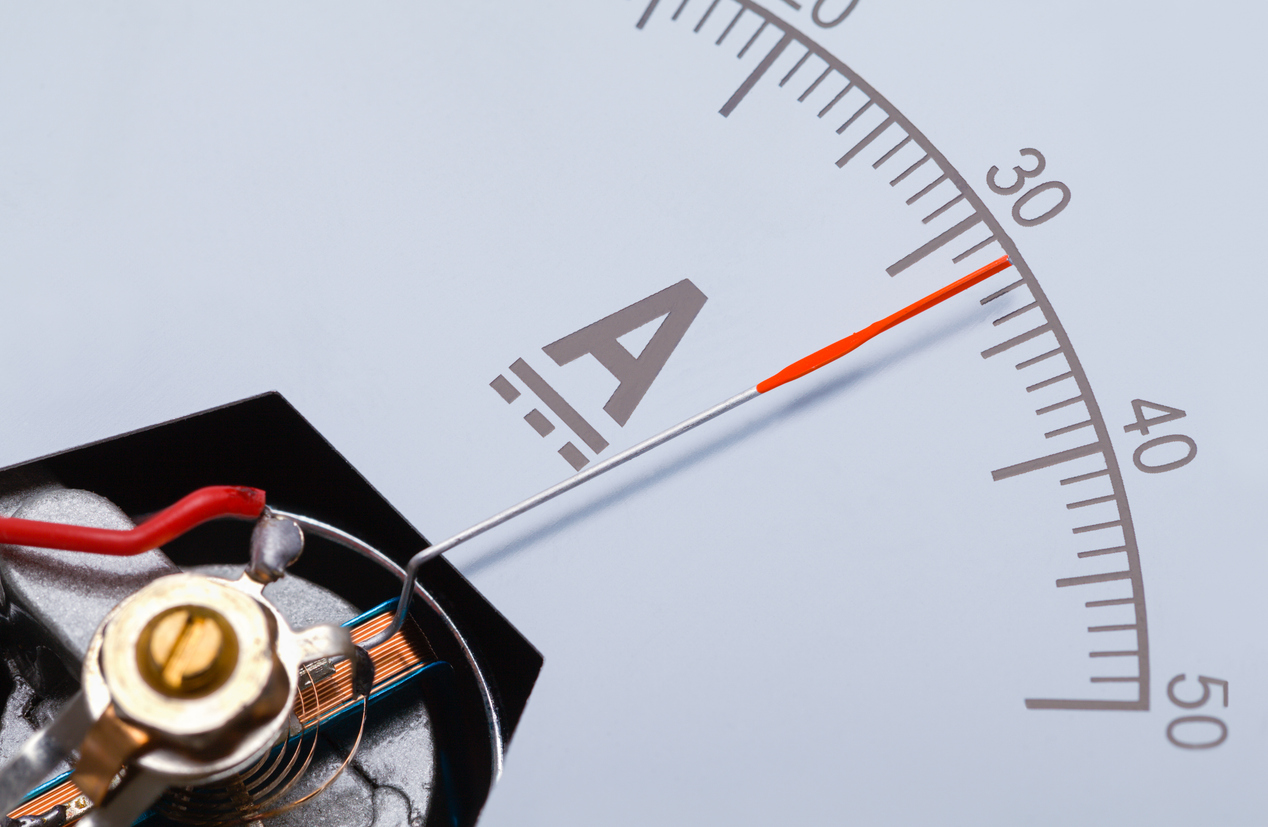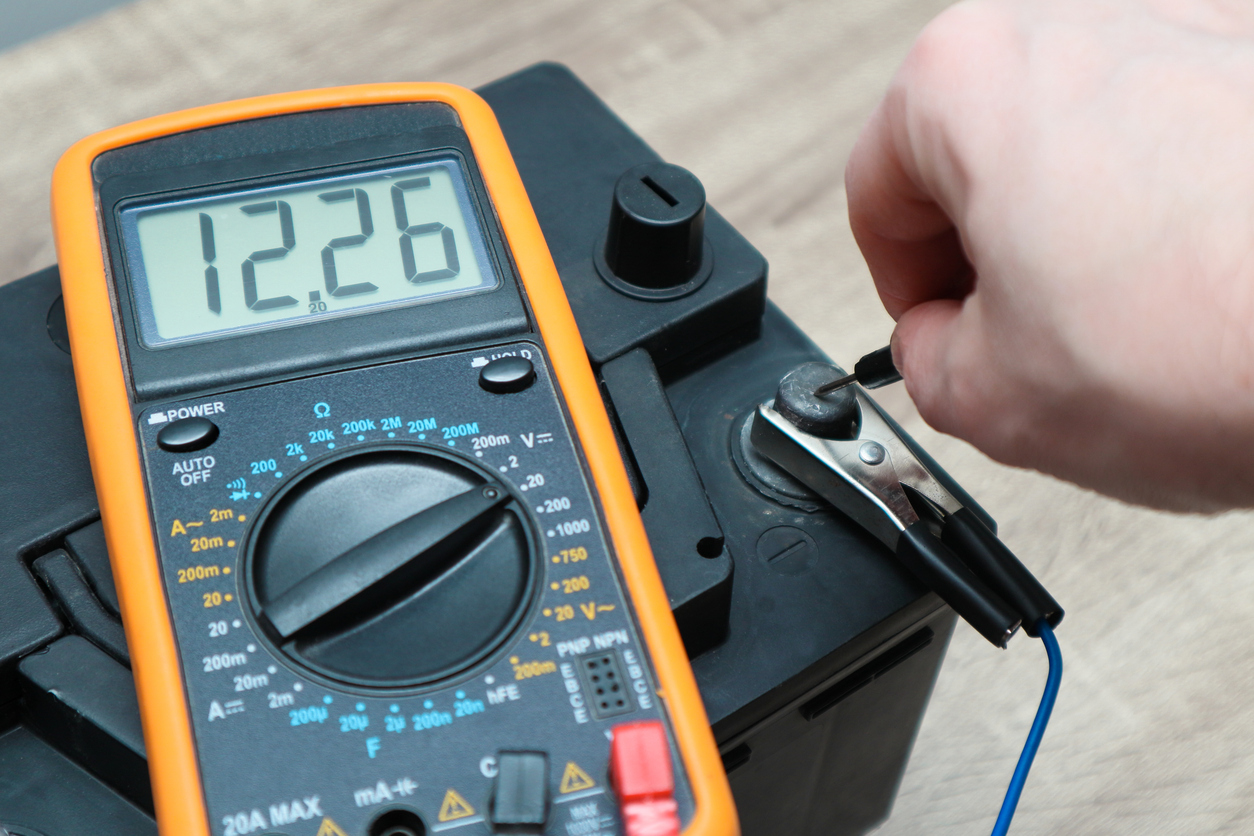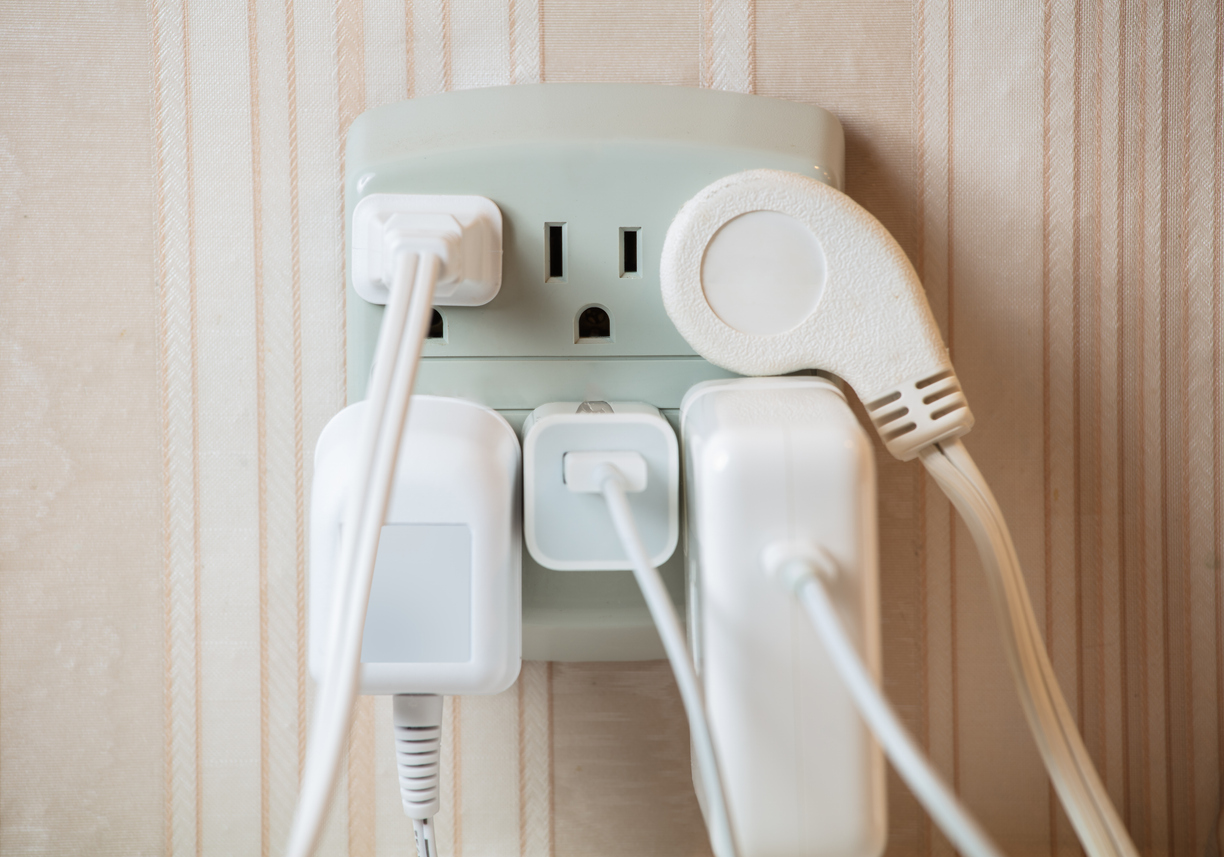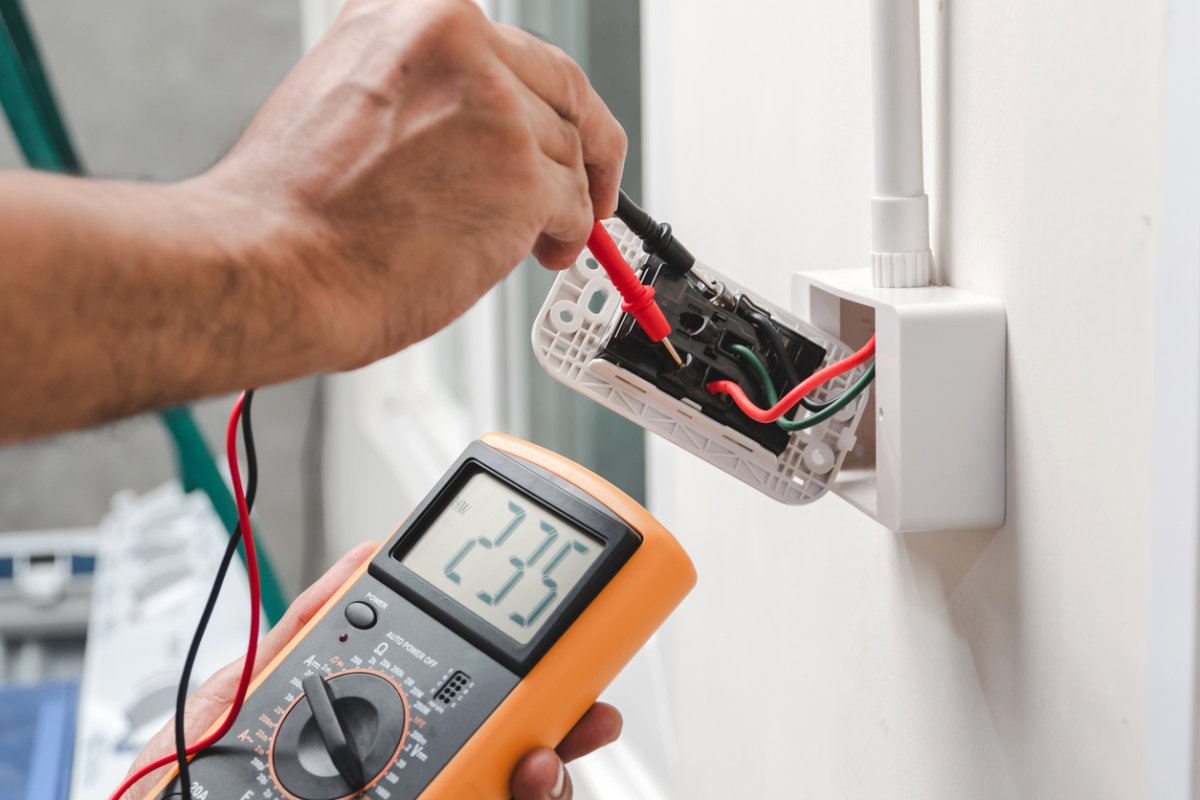We may earn revenue from the products available on this page and participate in affiliate programs. Learn More ›
Tackling an electrical DIY project can be intimidating if you don’t know how power, pressure, and flow are measured in an electrical system. Before attempting to install or repair anything electrical, it’s helpful to learn how to calculate watts, volts, and amps. However, if these terms are only vaguely familiar, it’s a good idea to take a step back from hands-on work to learn how to differentiate between amps vs. volts vs. watts and understand how they all relate to one another.
Amps and volts are often used interchangeably to describe the potential power of an electrical system, leading to even more confusion about the difference between voltage and amperage. If you ask the average DIYer, they probably couldn’t provide a basic definition when asked about what amps, watts, and volts actually are—and they’re not alone. To better understand what these units of measure actually, well, measure, let’s start by breaking them down one by one.

Amps are the unit of measurement used to describe electric current.
When trying to understand how amps, volts, and watts interact with each other, it’s often best to visualize a hose or pipe and how the water flows through it. Amps are essentially the speed, flow rate, or current at which electrons flow through a conductor, much like the measurable speed of water flowing through a pipe. One amp is the amount of current produced by the force of one volt moving through the resistance of one ohm.
While amps are the units of current, this measurement is typically represented by the letter “I” in electrical equations, which originates from the French term intensité du courant, or current intensity. Amps can be easily calculated with this simple formula if you already know the wattage and voltage:
Amps = Watts / Volts
However, ohms are also important to consider when building an electrical system. Ohms are the unit of measurement that represents the electrical resistance of a conductor, and they can be thought of as the diameter of the hose or pipe in a water system. Resistance works to slow down the flow of electrons, limiting the electrical output. Ohms can be calculated using the following formula:
Ohms = Volts / Amps
Volts measure the potential difference between two points in an electric circuit.
Voltage is essentially the difference in electrical potential between any two points in a circuit. When comparing volts vs. amps, if amperage can be thought of as the speed of water flowing through a pipe, voltage would be the pressure of that water flow. In a circuit, volts represent the force pushing the electrons through a conductor. Voltage is essentially the difference in electrical potential.
Together, volts and amps measure the potential power output of an electrical system. Though it’s important to note that higher amperage in a system does not mean the voltage will be higher as well, and higher voltage does not lead to higher amperage. Instead, you can use this simple formula to determine the correct voltage based on the watts and amps:
Volts = Watts / Amps
A watt is the rate of electricity produced or expended as one amp of current flows through one volt.
Watts measure the rate at which electrical energy is produced, expended, or transferred within a circuit. In simpler terms, watts are the power of the system. One watt is equal to one joule of energy used per second, so a 100-watt light bulb would consume 100 watts of energy or 100 joules of energy per second.
By increasing either amperage or voltage, you can increase the power of the electrical system—though the physical conductor needs to be able to support that increased power. Since wattage depends on both the amps and volts of a system, you cannot determine how many watts are in an amp without knowing the voltage. Similarly, you cannot calculate how many watts are in a volt without knowing the amperage. If you do know the amps and volts of a system, use this wattage formula to find the total watts:
Watts = Amps × Volts

The volt-ampere describes apparent power in an electric circuit, while wattage measures real power.
Since both amps and volts are required to determine the power of the system, these units of measurements are combined in the hyphenated term volt-ampere. A volt-ampere is essentially the measurement of the apparent power in an electrical circuit.
When calculating volt-amps, the result is typically equal to the wattage of the system, but instead of measuring the actual power output, volt-amps measure the apparent or potential power of the electrical system. It’s a slight difference, but where electrical safety is concerned it’s worth noting that wattage influences the actual work output, energy, and heat produced by the system, while volt-amps simply provide necessary system information needed to size wires, fuses, or circuit breakers.
Assuming the resistance of the system remains the same, you can calculate the power of the system using the following formula:
Power = Current x Voltage
You can measure the amperage and voltage of an electric circuit with a multimeter.
There are a range of tools that can be used to measure the amperage, voltage, and resistance of an electrical circuit, though one of the best tools is known as a multimeter. This device allows the user to verify the current or amperage, check the resistance or ohms, and measure the voltage of the system.
You can find multimeters with electrical probes or clamp-on multimeters, depending on your preference. Additionally, DIYers can invest in an ammeter or voltmeter to take accurate measurements of the amperage and voltage of an electrical circuit. The cost for these tools varies depending on the accuracy, measurement devices, and the range of measurements.

Higher wattage electronics generate more power and higher heat.
Given that wattage is a measurement of the power that is flowing through the electrical system, it makes sense that as the wattage increases, so too does the amount of power that is generated. However, this also leads to an increase in the amount of heat produced by the power flowing through the electrical system.
If circuits, such as those found in power strips and extension cords, are not intended to manage the higher wattage, then it can cause the wires and connected electrical components to overheat. Severe overheating can cause the wires to spark, melt, and start a fire, so it’s essential to ensure the electrical circuit is suitable for the amount of amps, volts, and wattage required to operate the connected appliances or electrical devices.
Knowing how to measure and calculate wattage, amperage, and voltage is essential.
When building, installing, or repairing an electrical system, the DIYer needs to know how to measure and calculate wattage, amperage, and voltage to ensure that they purchase the correct wires, invest in the right devices, and manage the existing electrical system without overloading any circuits.
Additionally, electricity is a very dangerous power that can cause serious harm or even death, so it’s important to know how to measure and calculate wattage, amperage, and voltage, not just for building and repairing electrical systems, but also to ensure your ongoing safety.
In a typical residential system with less than 500 volts, accidental electrocution can cause pain, muscle spasms, and burns. High-voltage systems with more than 500 volts can cause deep burns, nerve damage, cardiac arrest, and death. However, you shouldn’t underestimate residential electrical systems. Humans have died from exposure to voltages as low as 42 volts, though the chance of survival is significantly higher at lower voltages. With this in mind, always use a multimeter to test electrical systems to ensure no power is flowing to them before starting any job.


